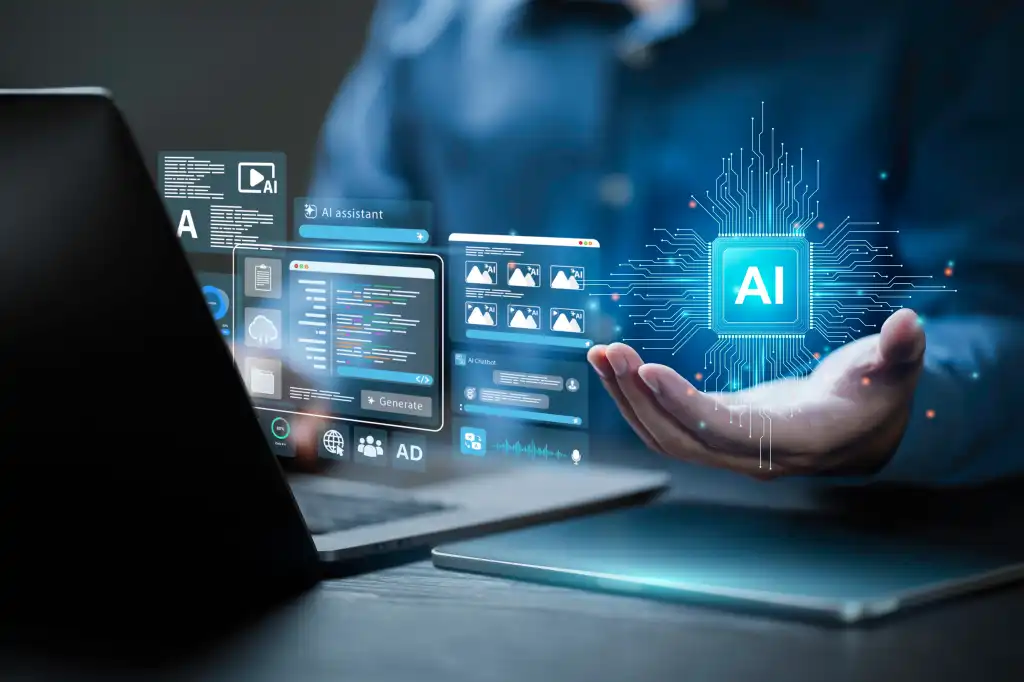Wireless technologies form the core of this digital revolution as the globe is more linked than it has ever been. The 5G era is fully underway and promises faster speeds, reduced latency, and seamless connectivity as we enter 2025. For companies, consumers, and the direction of technology going forward, however, what does this mean? Don’t worry! That’s why this blog is here!
This blog will talk about how wireless technologies are revolutionizing sectors, their part in the 5G era, and future developments in connectivity, automation, and communication.
What is 5G, and why is it a Big Deal?
The most recent development in mobile networks is Fifth Generation wireless technology, 5G. Its intended delivery is ultra-fast internet speeds, up to 100 times faster than 4G.
• Reduce latency, so lowering the data transmission’s delay.
• Greater device capacity—that is, connecting more devices concurrently.
• Enhanced dependability—better performance in congested environments
Users of 5G technology can download movies in seconds, have lag-free gaming, and take flawless video calls. Beyond entertainment, though, 5G is opening a universe of opportunities in sectors including manufacturing, transportation, healthcare, and smart cities.
Wireless Technologies’ Function in the Fifth Generation
1. Facilitating More Dependable and Quick Communication
The enhancement in communication brought about by wireless technologies in the 5G era is among their main benefits. 5G is accelerating and smoothing out everything, from cloud-based collaboration to instant messaging to high-definition video calls.
• Virtual meetings and remote work High-speed wireless networks let platforms like Zoom and Microsoft Teams operate free from buffering or connectivity problems.
• Internet of Things Devices and Smart Homes Wireless technologies let smart devices—like Google Nest and Amazon Alexa—communicate easily, so enhancing convenience and automation.
• Advanced Mobile Networks: Mobile carriers are extending 5G coverage so users may access fast internet anywhere they travel.
2. Powering the Internet of Things (IoT)
Revolution 5G will help IoT (Internet of Things) most notably. Wireless technologies guarantee effective and safe communication among billions of connected devices expected by 2025.
• Smart Homes → With 5G, IoT-powered appliances including smart thermostats, refrigerators, and security cameras run faultlessly.
• AR glasses, fitness trackers, and wearable technology—including smartwatches—rely on 5G for real-time data synchronization.
In manufacturing, wireless connectivity supports robotic automation, predictive maintenance, and real-time equipment monitoring under Industrial IoT.
3. Wireless Connectivity: Transforming Healthcare
Thanks in large part to 5G and wireless technologies, the healthcare sector is undergoing significant change. Faster, more dependable networks enable:
Using ultra-low latency 5G connections, surgeons can operate robotic-assisted surgeries thousands of miles away.
• Telemedicine → HD video calls let patients see doctors, so lowering the need for in-person hospital visits.
• AI-powered Diagnostics → Wireless connectivity facilitates real-time patient vital monitoring, so enabling faster diagnosis and improved patient care.
4. Smart Wireless Network Transforming Transportation
Future of transportation and autonomous cars are being paved by 5G-enabled wireless technologies.
• Self-Driving Cars → Vehicles can interact with smart infrastructure and one another, so enhancing efficiency and safety.
• Real-Time Traffic Management: By letting cities track traffic conditions and maximize paths, wireless networks help to lower congestion.
• Drones & Delivery Services → 5G is improving drone technologies, so enabling quicker and safer delivery of packages.
5. Improve Media & Entertainment Experiences
Our consumption of entertainment is fast changing due to 5G-powered wireless technologies.
• 4K & 8K Streaming → Buffering is a thing of the past since 5G lets platforms like Netflix and YouTube flawless, high-quality streaming.
• Cloud Gaming → High-performance gaming delivered without costly hardware using 5G networks by Xbox Cloud Gaming and Google Stadia
• Augmented & Virtual Reality (AR/VR) → AR and VR are being used in interactive entertainment and gaming as immersive shopping experiences.
6. Turning on Infrastructure and Smart Cities
Wireless technologies are what enable smart cities to enhance urban living. 5G networks drive systems including smart traffic lights that change depending on real-time traffic conditions.
Public safety systems → wireless surveillance and emergency response enhancements; waste management sensors → optimizing garbage collecting and waste reduction.
Cities get more sustainable, efficient, and sensitive to local needs with 5G.
7. Strengthening Cybersecurity and Data Protection
More wireless devices linked to 5G networks raises security issues. Cybersecurity is being strengthened by fresh developments in wireless encryption, artificial intelligence-driven threat detection, and safe authentication techniques.
Real-time identification and stopping of cyberattacks driven by artificial intelligence
• Safe 5G Networks → Strong encryption and authentication methods help to guard user data.
• Blockchain in Wireless Security → Decentralized data storage for improved breach prevention.
Problems with Wireless Technologies in the Five-G Age
5G and wireless technologies present difficulties even if they have many advantages:
1. Infrastructure Distribution
To run effectively, 5G depends on a dense network of small cell towers, hence infrastructure investment is increased.
2. Risks of Security
The risk of cyberattacks rises as one has more linked gadgets. IoT and 5G networks’ weaknesses could be used by hackers.
3. Excessive Prices
Especially for small businesses and developing nations, deploying 5G networks and updating devices can be costly.
4. Environment Issues
Given millions of devices linked to 5G networks, electronic waste and higher energy consumption raise issues.
Wireless Technologies’ Prospect in the Five-G Age
Wireless technologies will keep developing by 2025 and we should anticipate:
• 6G Research & Development → Scientists are already working on 6G, which promises even faster speeds and clever AI integration while 5G is still under deployment.
• Wider 5G Adoption: 5G networks will enable more nations and rural areas to have access, so enhancing connectivity all around.
• AI and Automation Growth: Companies will employ wireless AI-powered automation to increase productivity and lower human labor required.
Expect IoT devices driven by artificial intelligence, holographic calls, and advanced AR/VR experiences—new innovations in smart devices.
Wrapping it Up!
The five-generation of 2025 is transforming our means of communication, employment, and living. At the center of this revolution are wireless technologies, which allow faster communication, smart devices, and more industry-wide efficiency among other things.
As 5G grows, it will open fresh prospects in transportation, entertainment, healthcare, and more. Although obstacles still exist, wireless connectivity seems to have bright future.

















